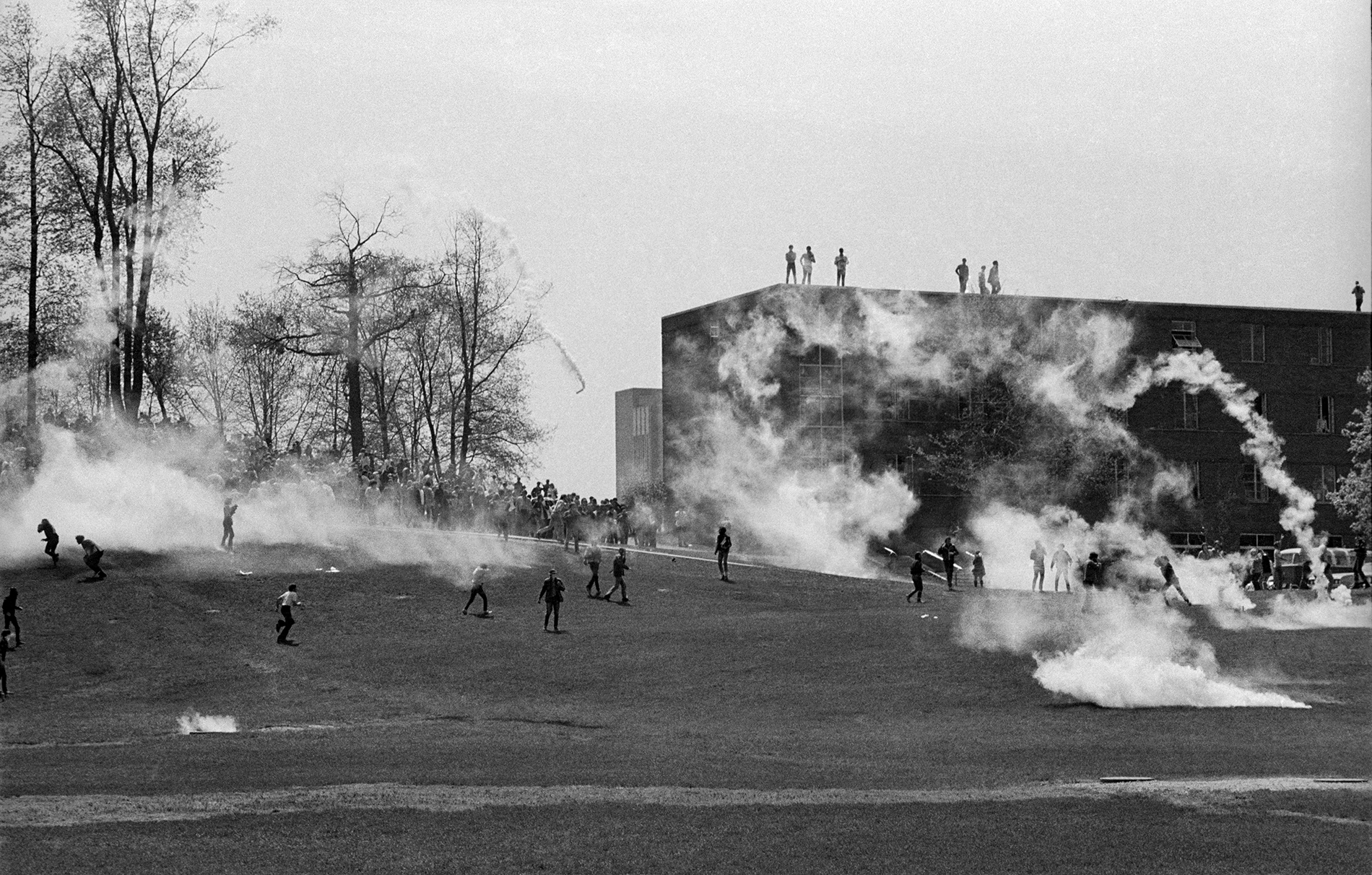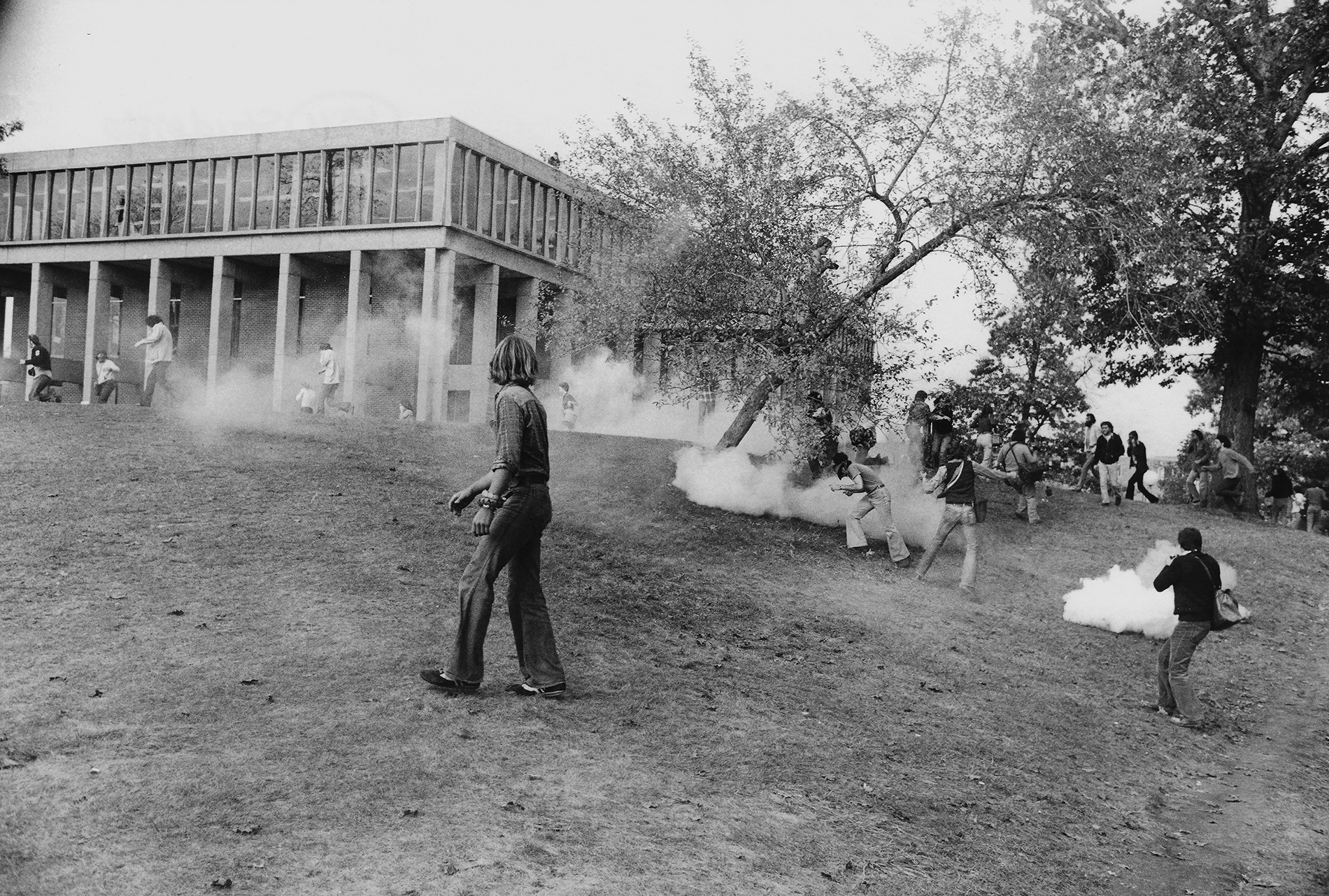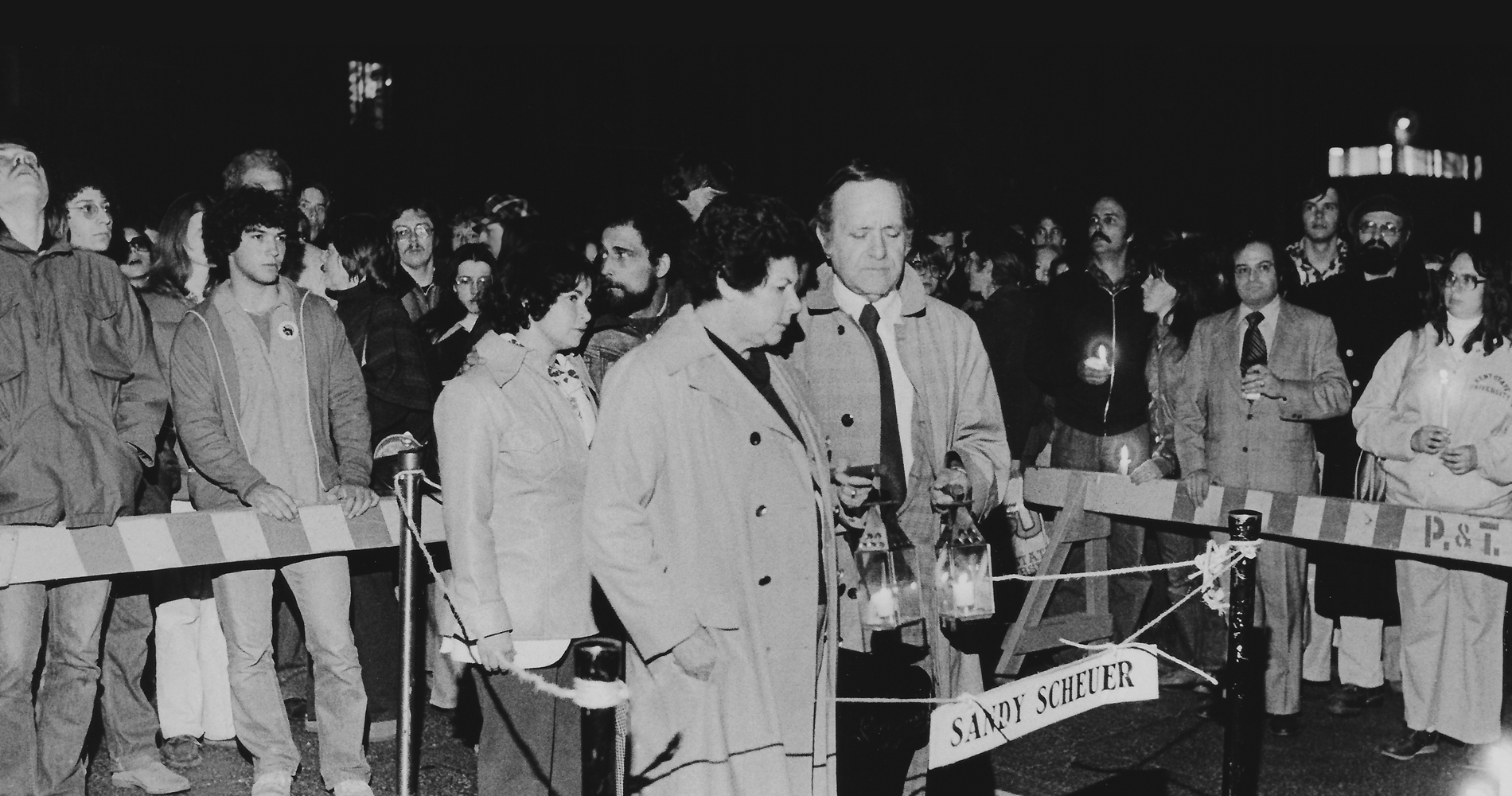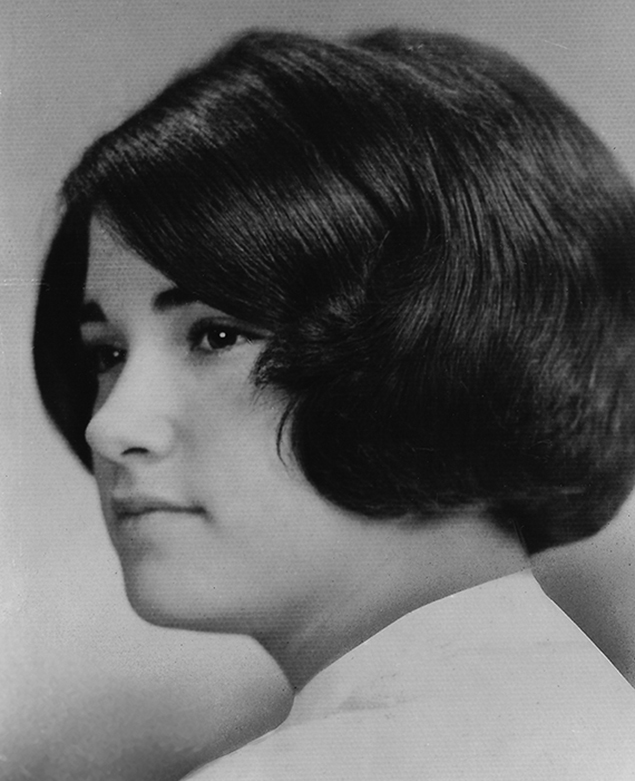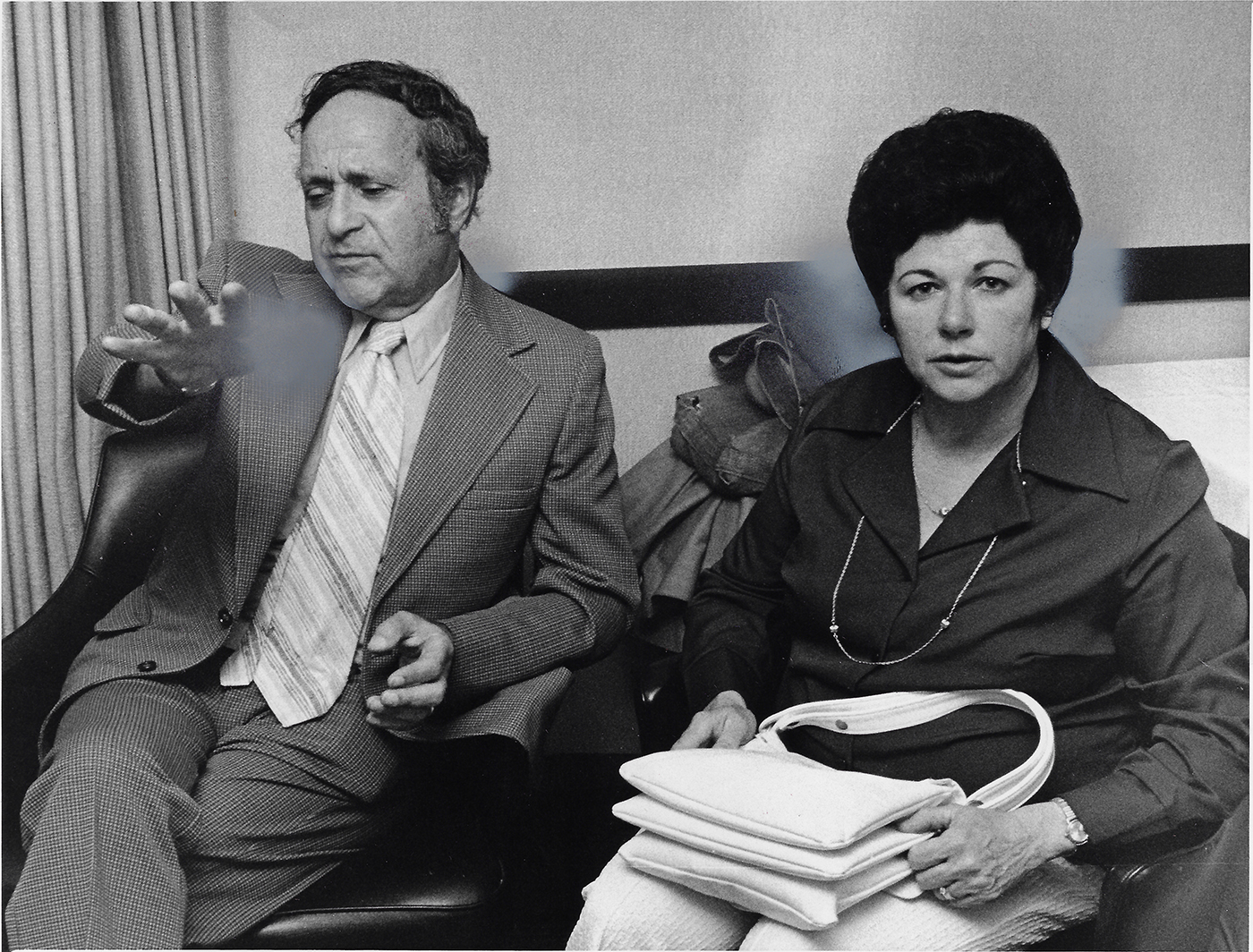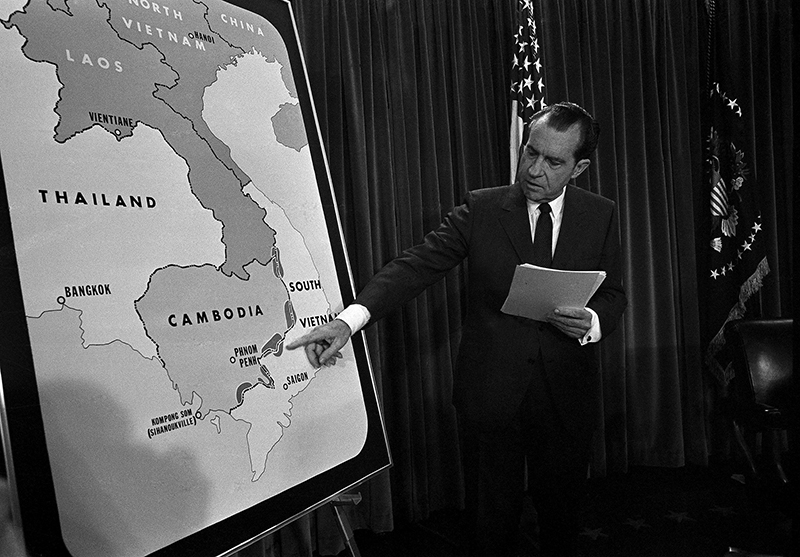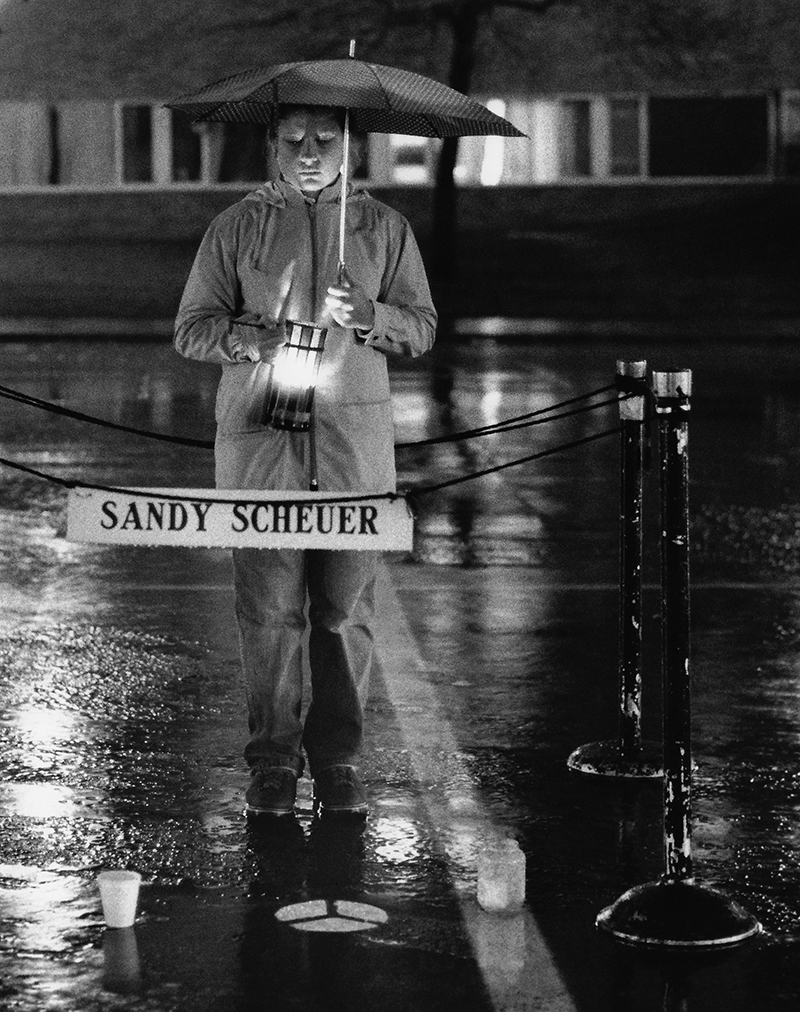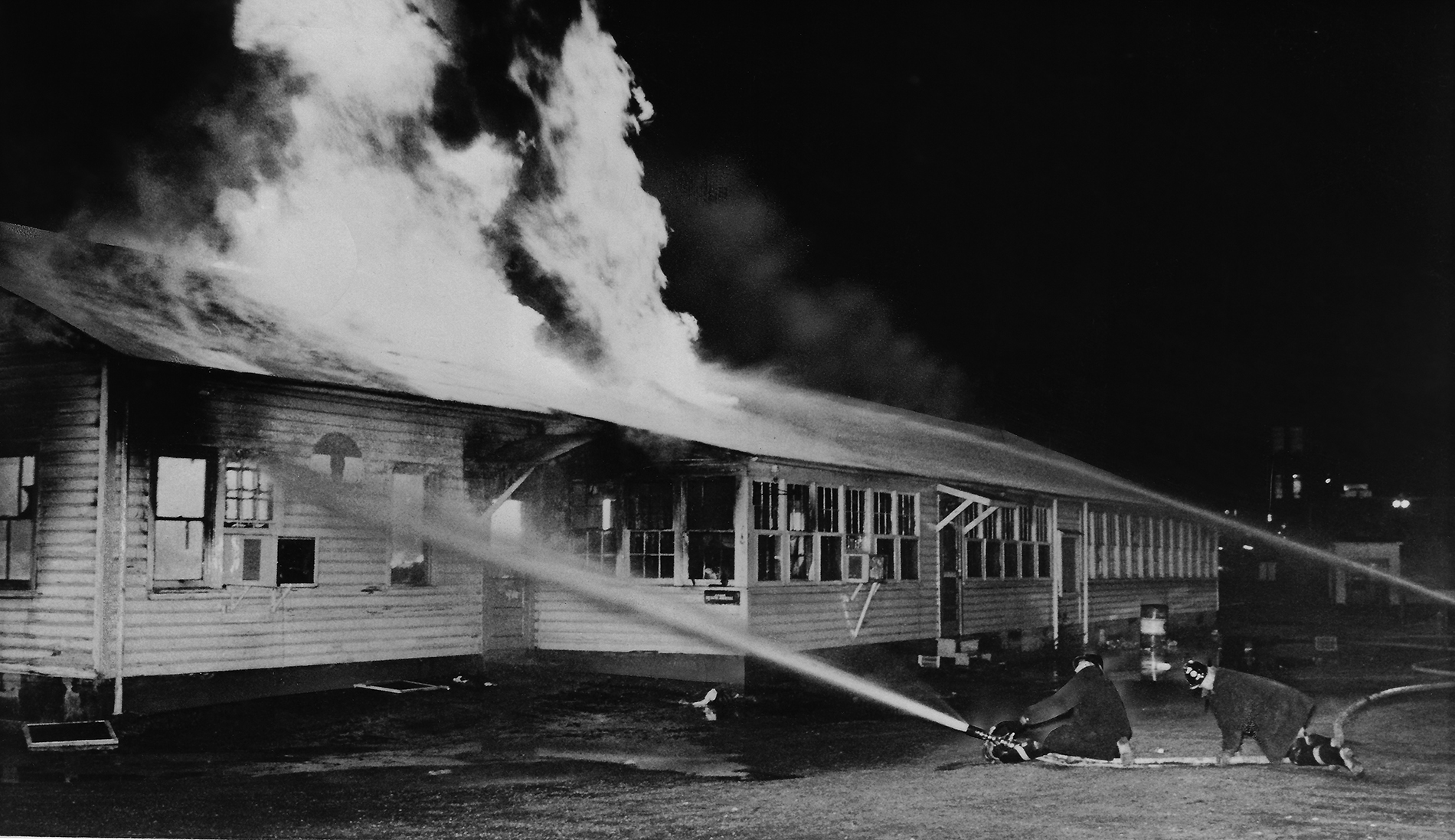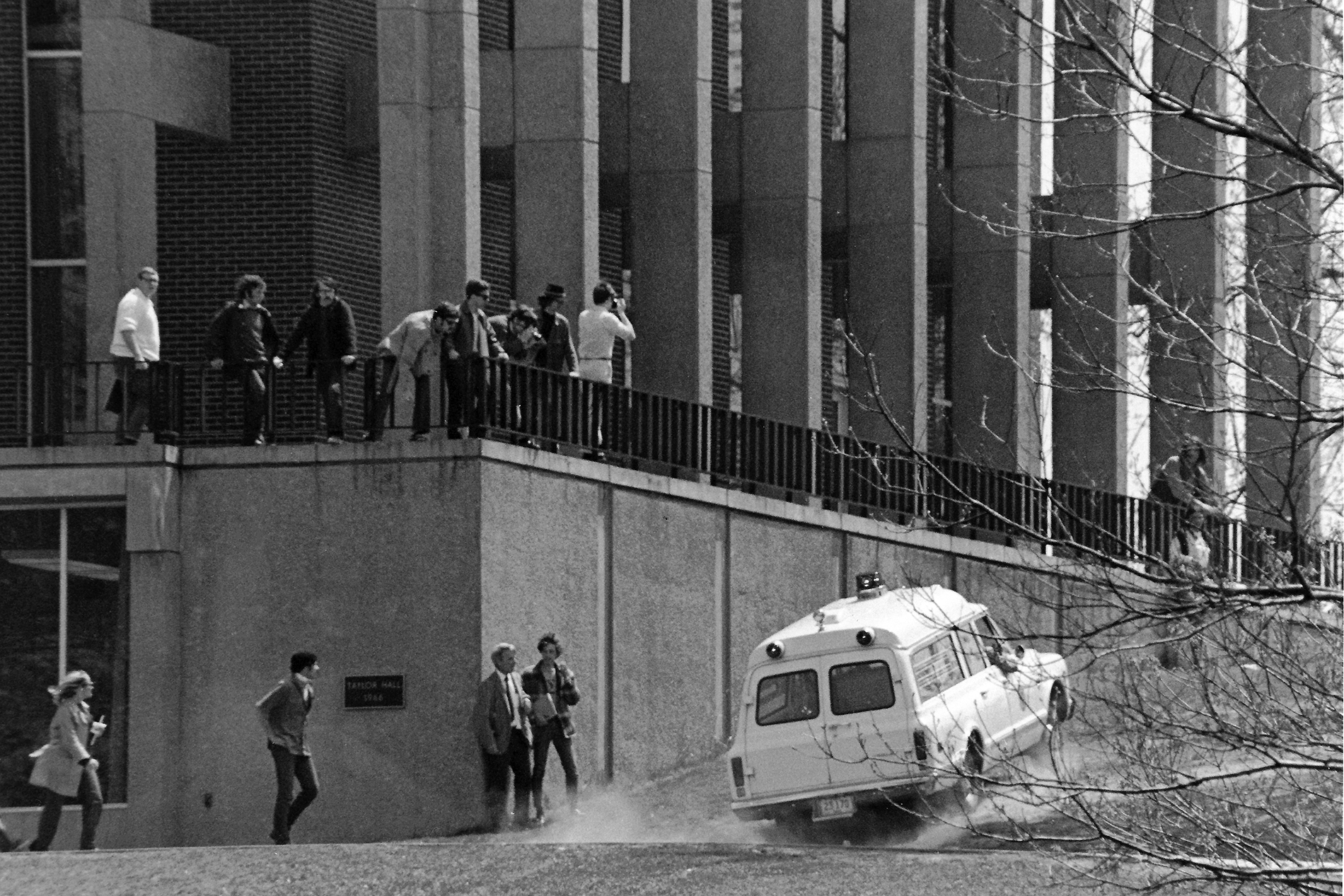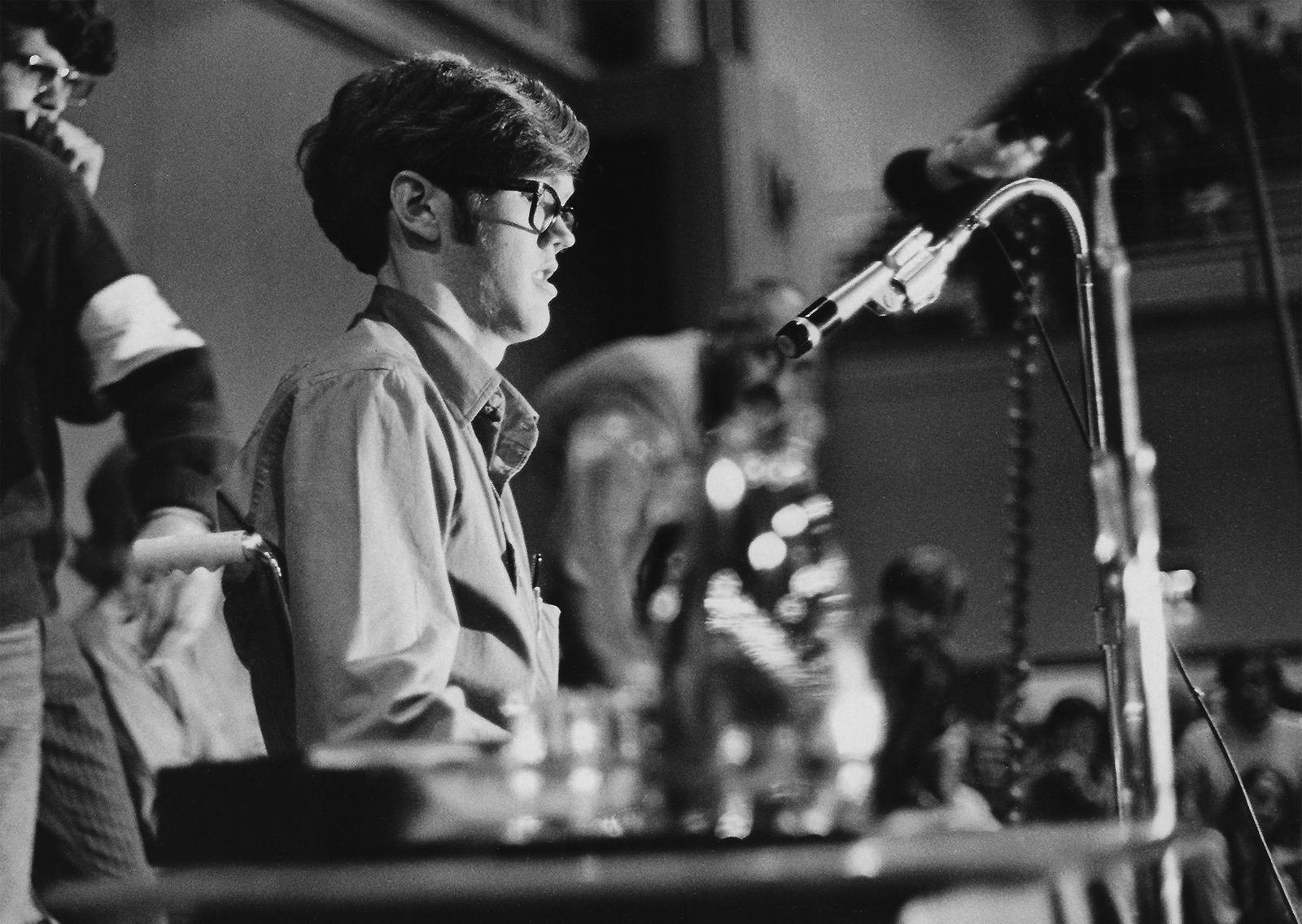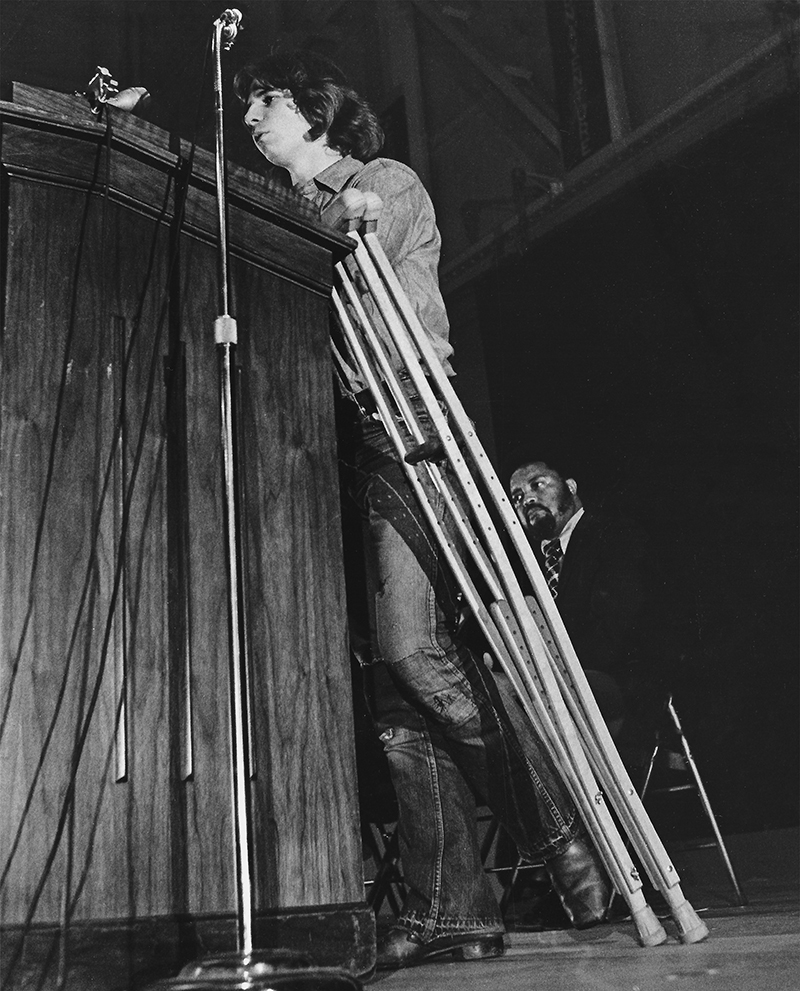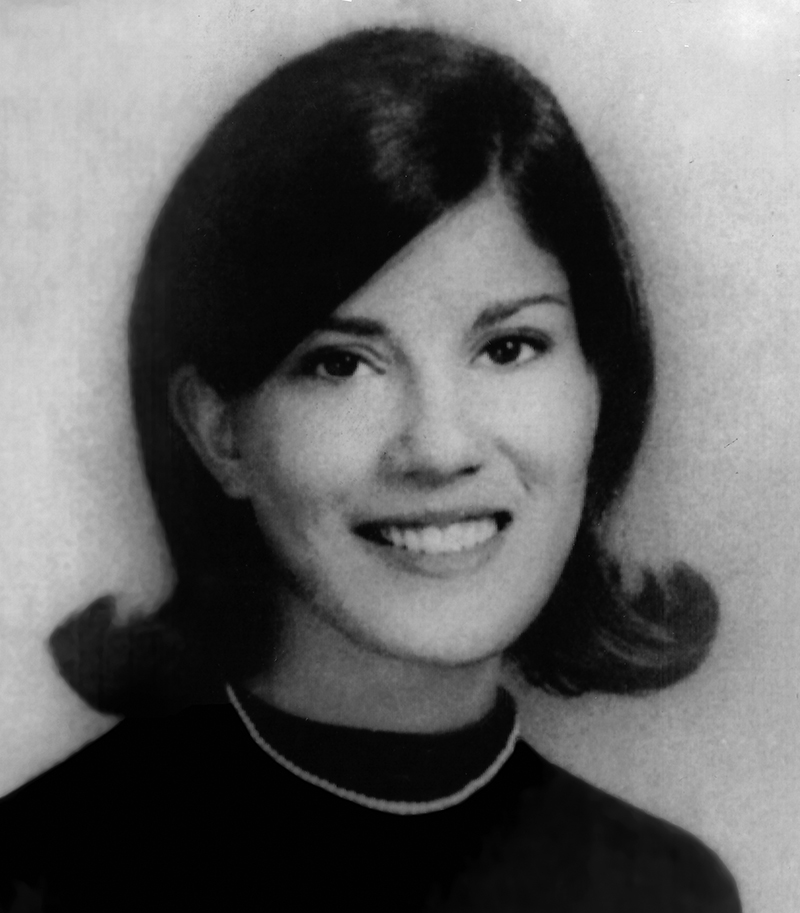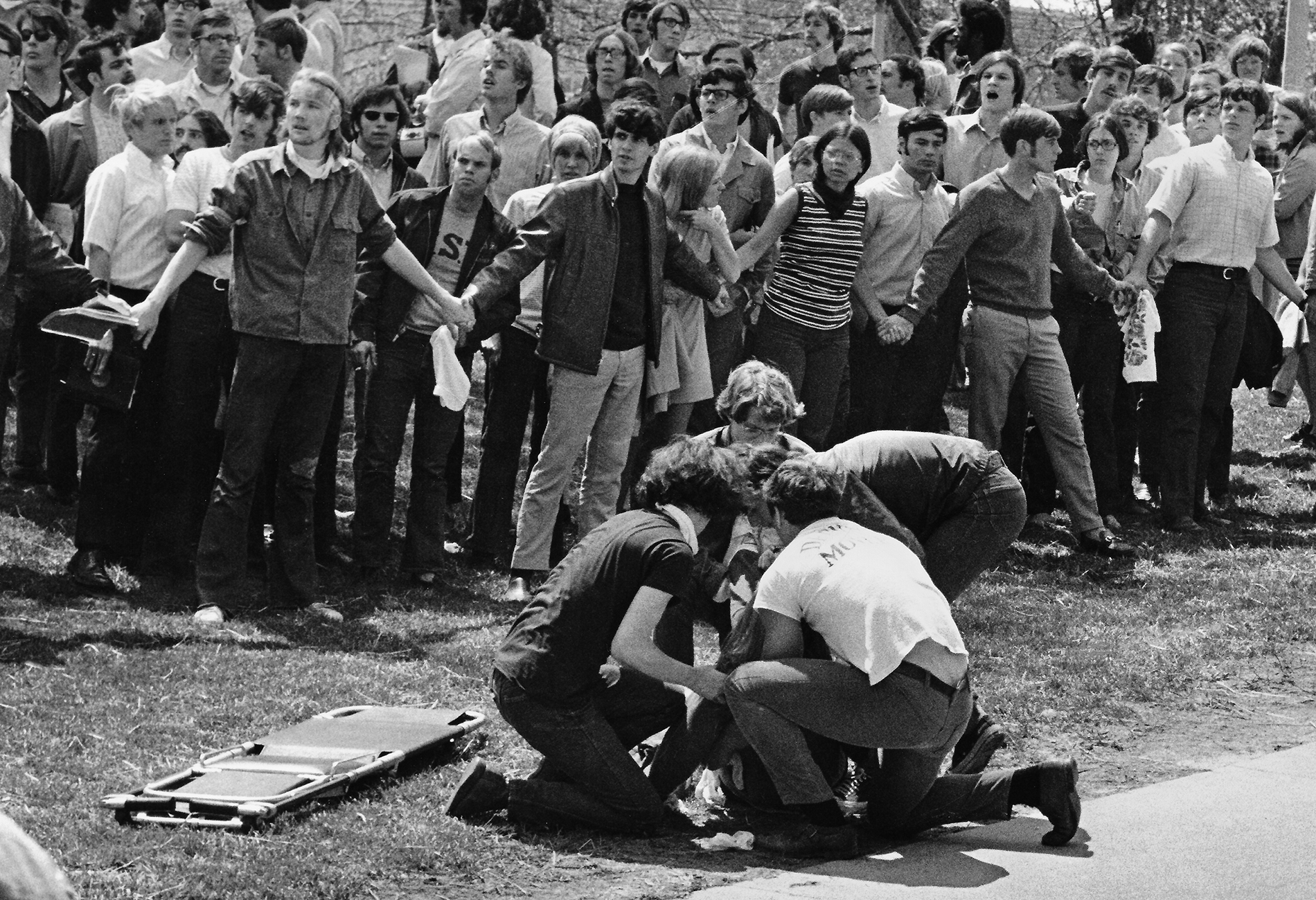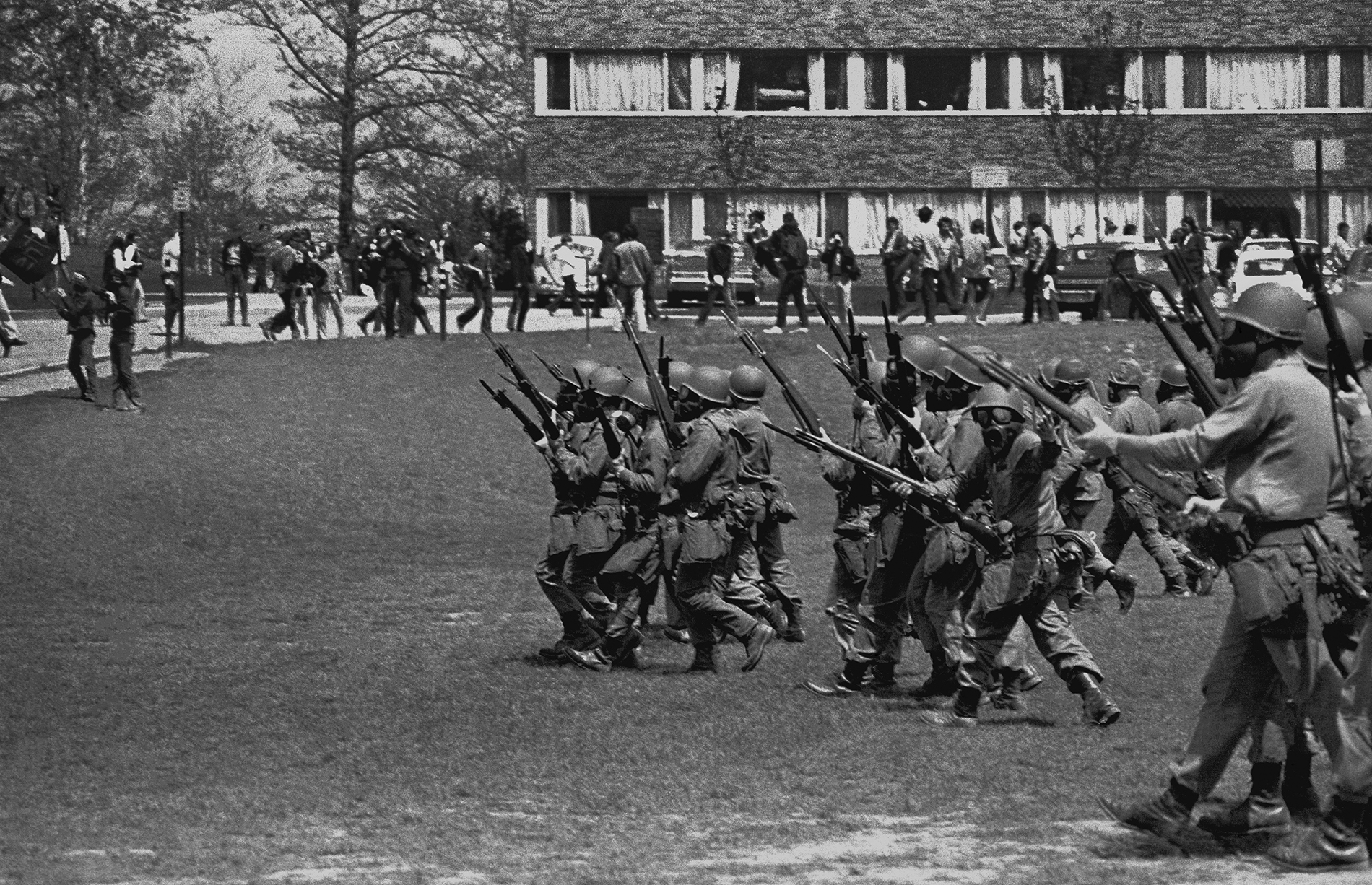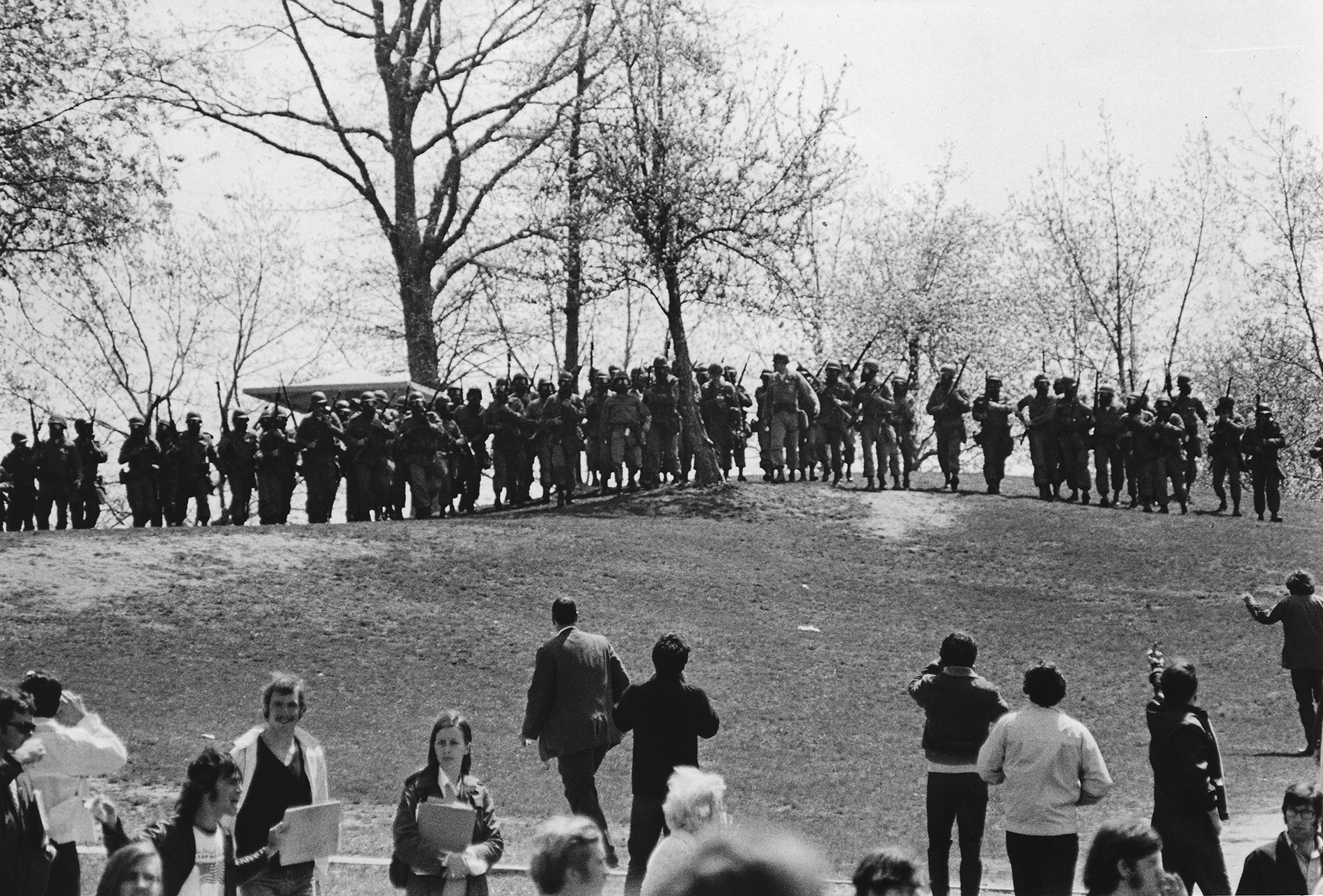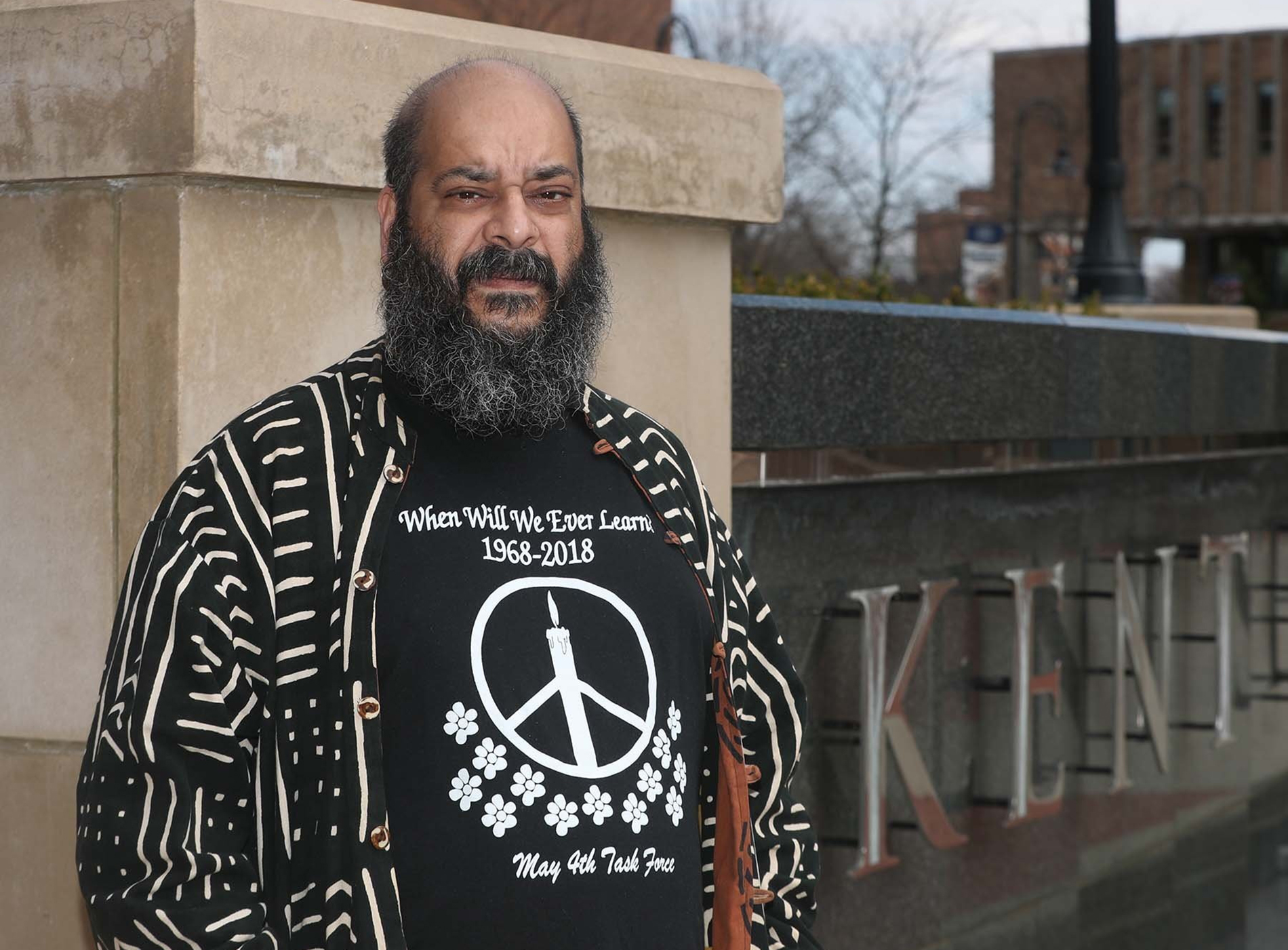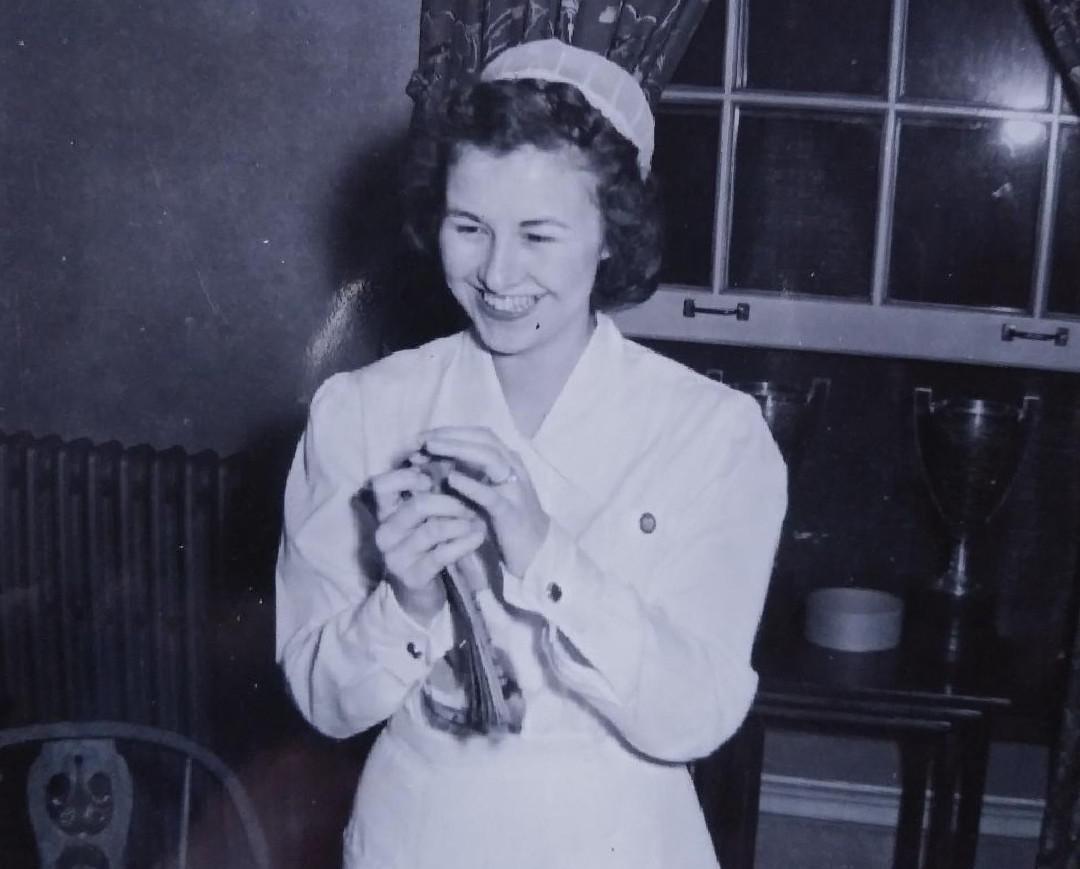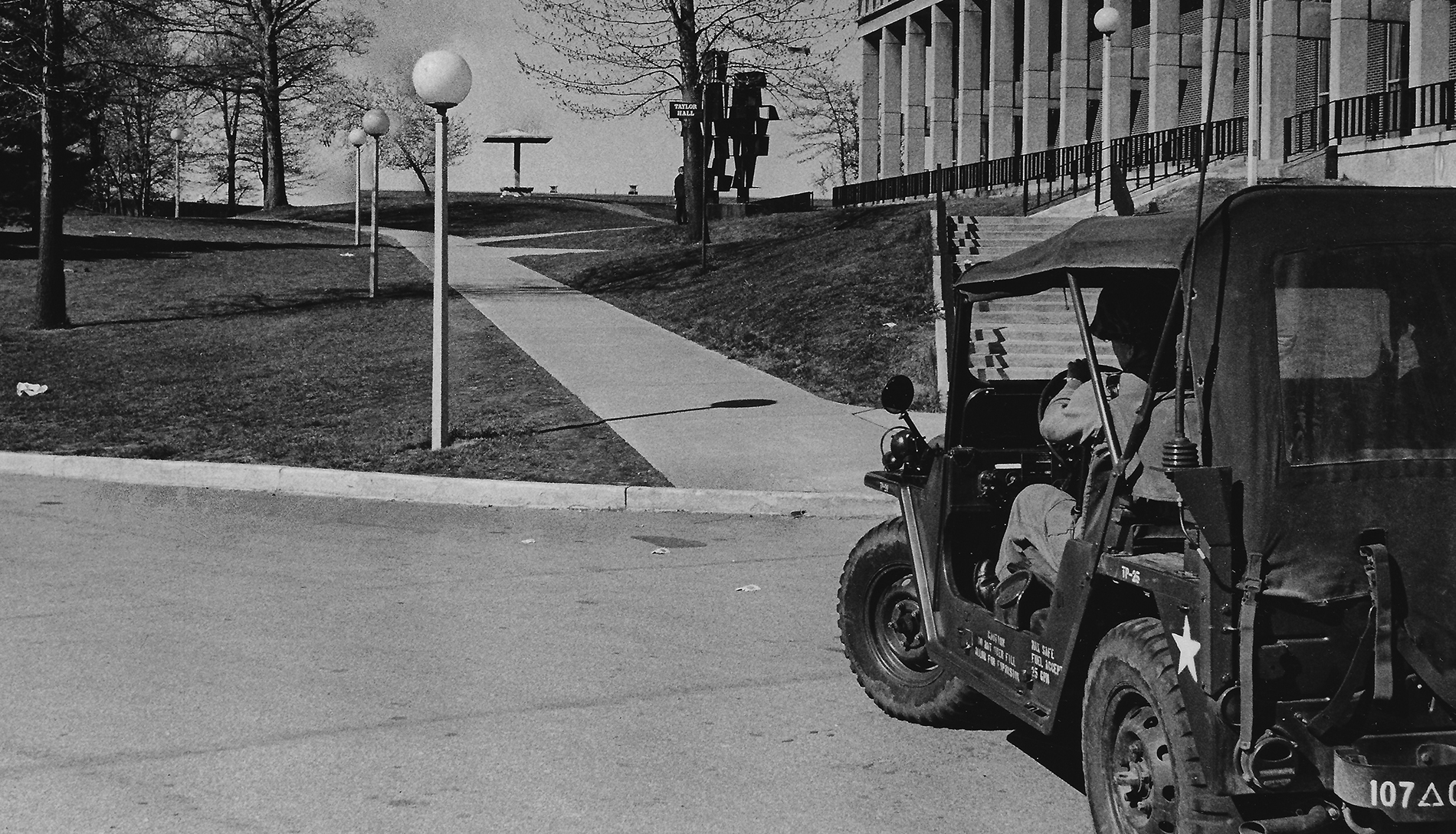She studied to help stroke victims find their voices. The Kent State shootings took hers.
Paula Schleis, Akron Beacon Journal
April 30, 2020
APRIL 30, 1970: NIXON EXPLAINS NEW INVASION
Editor’s note: This seven-part series relives the days leading up to the May 4, 1970, shootings at Kent State University, through the lives of some of those most affected. Today, the events of Thursday, April 30, 1970, and the life of junior Sandra “Sandy” Scheuer.
Sandy Scheuer sat on the wrap-around porch of the house on East Summit Street in Kent, wondering what to do about the bedraggled dog she had taken in.
Her junior year at Kent State University was coming to an end. She’d be going home to Boardman, and the women she shared the big house with would be leaving for the summer as well.
But finding a home for this stray was going to be a challenge. She was pregnant. In recognition of its rounded belly, the girls were calling the pooch “Heavy.”
Sandy Scheuer was one of four students killed at Kent State University on May 4, 1970.
Maybe she could talk her mom into taking it. It wouldn’t be the first stray she’d brought home. Sandy was always on the lookout for stray animals – or people – in need. It’s one of the reasons she wanted to become a speech therapist.
The 20-year-old was an honors student at KSU, and spent time in the department’s clinic helping fellow students conquer speech impediments. Long term, her goal was to help stroke victims find their voices again.
It could be that her need to help others came from her parents.
Her father, Martin Scheuer, was a Jew who grew up in Germany as Hitler ascended to power. He fled to Palestine and served in the Jewish underground organization, the Haganah, then made his way to the United States in 1935 at the age of 27.
He left behind relatives in California to take a job in Youngstown, where he met his wife, Sarah. They settled there and had two daughters, Sandra – they called her Sandy – and Audrey.
When Sandy was shopping for a college, her parents encouraged her to go to Stanford University. Those relatives out in California could help look after her. But Kent State was just up the Ohio Turnpike, she told her parents. She could call them regularly, and run over for quick visits.
Martin and Sarah Scheuer, whose daughter Sandra was one of four students killed at Kent State University on May 4, 1970, after a verdict in their civil lawsuit. Aug. 27, 1975. Lewis Henderson | Akron Beacon Journal
And so Sandy settled in at Kent State, though her nearness never stopped her parents from worrying. They declined her request for a car. Too dangerous. And when she wanted to join her friends on a trip to Florida last Christmas break, they bought her a plane ticket. They couldn’t bear the thought of the long drive down.
“A father worries,” Martin Scheuer said in his thick German accent.
The little incidents of everyday life were important to Sandy. She cherished the mementoes that marked her years. Theater tickets, concert programs, photos, letters, cards. She kept them in a scrapbook.
She collected life, but she was far from material. Her longtime boyfriend Bruce Burkland would trail her for hours as she walked about a store in search of bargains. She’d quit the Alpha Xi Delta sorority to save the expense, and sold her blood regularly to earn spending money.
She learned financial responsibility from her parents. What she didn’t inherit from them was their attention to politics.
Her dad voted for Richard Nixon and supported the president’s efforts in Vietnam. He never questioned that America was doing the right thing, keeping those communists in check.
U.S. President Richard Nixon poses in the White House after his announcement to the nation on April 30, 1970, that American ground troops had attacked, at his order, a communist complex in Cambodia. Nixon points to area of Vietnam and Cambodia in which the action was taking place. Associated Press | File photo
Sandy thought it was senseless to send young men to die on the other side of the world. But she mostly kept those thoughts to herself. She declined invitations from friends to participate in or watch demonstrations or marches on campus.
No, her whole life was about finding the positive. She loved to laugh, her thick, black hair bouncing with the effort. She loved to make others laugh, too, often breaking out into goofy actions. More than once a professor would cast an eye her way, catching her in the act of distracting someone else in class. Her vivaciousness was part of her charm.
Sitting on the porch that pleasant Thursday afternoon, Sandy was oblivious to events happening 160 miles away, where anti-war protesters at Ohio State University were clashing with National Guardsmen and police. Six students were wounded by unknown means, though none seriously.
Kent State may have had its share of demonstrations over the past couple of years, but that unrest was a memory. An anti-war march held a couple of weeks earlier only drew about 100 of the university’s 21,000 students.
Nor did Sandy watch President Nixon that evening when he interrupted television programming to tell a war-weary country about his decision to invade Cambodia. The Viet Cong were using the country as a sanctuary, he said.
“We take these actions,” Nixon told viewers, “not for the purpose of expanding the war into Cambodia, but for the purpose of ending the war in Vietnam, and winning the just peace we all desire.”
Sandy’s fellow students were no doubt glued to their TV sets that night, but the set in Sandy’s house didn’t even work, and one of her roommates had taken the transistor radio.
Anyway, she had a more immediate worry. The pregnant pooch. She’d been walking the dog using a piece of ribbon. It was time for Heavy to have a real home and a real leash. Her mom was coming to visit Sunday. She’d ask her about it then.
Sandra Ferdinand of Canal Fulton took part May 3, 1984, in the candlelight vigil to commemorate the Kent State University shootings. She is standing in the spot where Sandra Scheuer was shot May 4, 1970, in the Prentice Hall parking lot. Paul Tople | Akron Beacon Journal
But first, she needed to get an anniversary card in the mail. Perhaps her parents would celebrate at her favorite Chinese restaurant back in Youngstown.
“Hope you have honorable good time and go to somewhere good to eat like Lychee Tree,” she penned on the card with a chuckle.
She’d better get to the post office soon. Their anniversary was May 4.
In six days, Martin and Sarah will receive Sandy’s anniversary card while they are planning her funeral arrangements.
In two months, folk songwriter Neil Young will release a new song “Ohio” and refer to Sandy when he asks, “What if you knew her and found her dead on the ground?”
In 10 years, Canadian poet Gary Geddes will write “Sandra Lee Scheuer” and muse: “As she walked in sunlight through the parking-lot at noon, feeling the world a passing lovely place, a young guardsman, who had his sights on her, was going down on one knee, as if he might propose.”
Sources: MAYDAY: Kent State (1981) by J. Gregory Payne; Akron Beacon Journal; The Kent Stater; Kent State University Libraries Special Collections and Archives; Thirteen Seconds: Confrontation at Kent State (1970) by Joe Eszterhas and Michael D. Roberts; The May 4 Shootings at Kent State University: The Search for Historical Accuracy (1998) by Jerry M. Lewis and Thomas R. Hensley; The (Youngstown) Vindicator.
